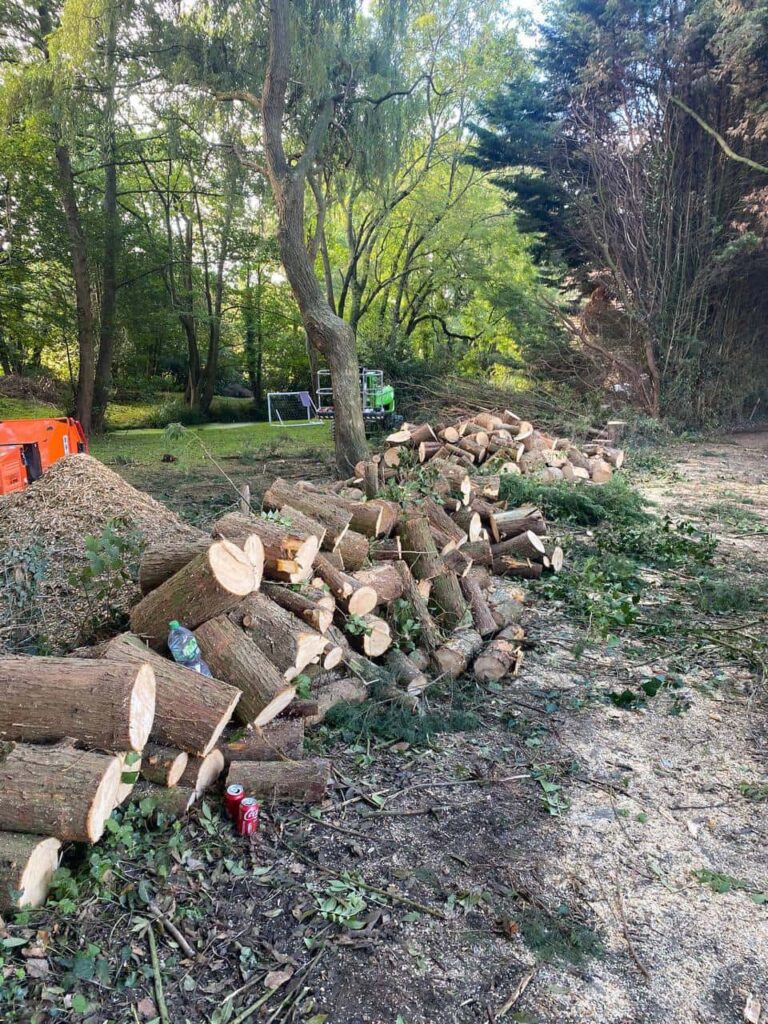Winter Stump Removal: Tips for Cold-Weather Projects
Introduction: While winter may not be the most popular time for outdoor projects, it can be ideal for stump removal. The ground is often frozen, making it easier to access and remove stumps without causing as much disruption to your landscape. In this blog post, Calverton Tree Surgeons will share valuable tips for successfully tackling stump removal during winter.
1. Assess the Stump:
Before diving into a winter stump removal project, assess the stump’s size, type, and location. Smaller stumps are more manageable during the cold season, while larger ones may require more effort and time.
2. Choose the Right Method:
There are two primary methods for stump removal: stump grinding and complete removal. Stump grinding is often the preferred method for winter because it’s less disruptive to the frozen ground. Discuss the best approach with a professional tree service to determine which method suits your needs.
3. Safety First:
Winter weather can be harsh, so prioritise safety throughout your project. Dress warmly with layers, wear appropriate footwear with good traction, and use gloves to protect your hands from the cold. Additionally, be cautious when using equipment in icy or snowy conditions.
4. Schedule Wisely:
Plan your stump removal project for a mild winter day when the temperature is above freezing. Attempting to remove stumps in extremely cold conditions can be challenging and uncomfortable.
5. Ground Conditions:
Frozen ground can make removal easier by stabilising the area around the stump. However, remember that if the ground is excessively frozen, it may be too hard for equipment to penetrate. Aim for a balance where the ground is firm enough to work on but not overly frozen.
6. Moisture Content:
Frozen or dry wood is often easier to grind or remove than wet wood. Winter’s drier conditions can work in your favour, as stumps may be less spongy and more manageable.
7. Clear Snow and Debris:
Before beginning the stump removal process, remove any snow, ice, or debris from the stump and its surroundings. This will make the work area safer and more accessible.
8. Stump Cover:
Consider covering the stump with a tarp or plastic sheet to protect it from accumulating snow or ice. This can help keep the stump dry and make the removal process more efficient.
9. Professional Help:
While DIY stump removal is possible, winter conditions can make it more challenging. Hiring a professional tree service like Calverton Tree Surgeons ensures that the job is done safely and efficiently, even in cold weather.
10. Plan for Aftercare:
After removing the stump, you’ll need to address the hole left behind—plan for soil replacement, levelling, and potential landscaping adjustments to restore your outdoor space.
Conclusion: Winter stump removal projects can be highly effective, thanks to the benefits of frozen ground and drier wood. However, it’s crucial to approach these projects with caution, ensuring safety and considering your location’s specific conditions. If you’re uncomfortable tackling stump removal in the winter on your own or have larger or more challenging stumps, consider enlisting the expertise of professionals like Calverton Tree Surgeons. With the right approach, you can successfully remove those unsightly stumps and prepare your landscape for a beautiful spring.
Call us on: 0115 647 1154
Click here to find out more about Calverton Tree Surgeons
Click here to complete our contact form and see how we can help with your tree’s needs.

